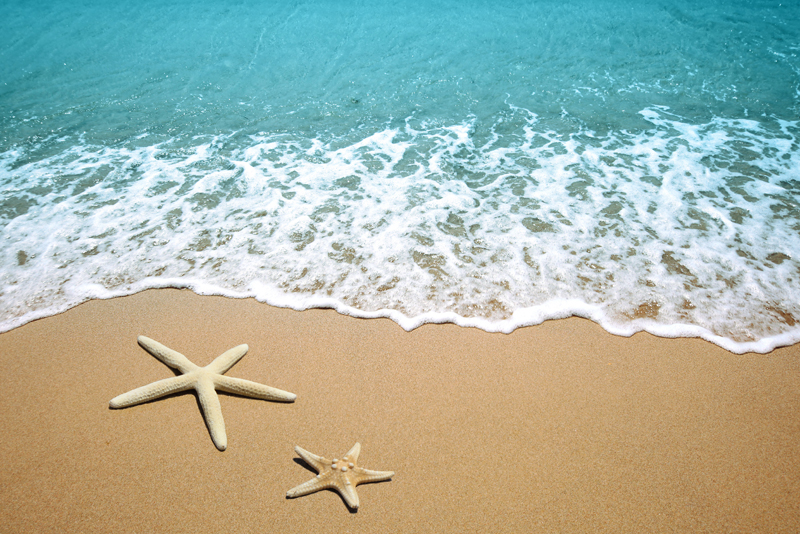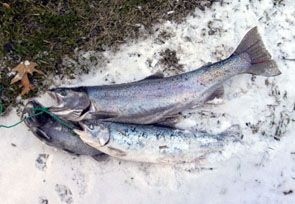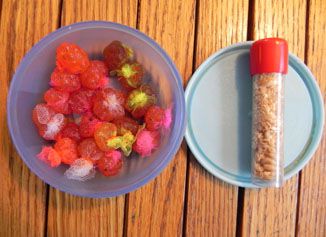Fishing Ohio's Steelhead Alley

In the past, I've had the opportunity to attend the annual Lake County Steelhead Fish Camp for Ohio outdoor writers hosted by the Lake County Visitors Bureau. When I signed up for this adventure in January, I wasn't expecting winter to still have us in a wintry chokehold at the end of March. This year's temps were much warmer than the seven degrees we experienced our first morning of fishing that year.
Steelhead Alley
 These highly sought after fish are found in the world-famous steelhead stronghold known as Steelhead Alley. Steelhead Alley runs along the south shore of Lake Erie from Vermillion, Ohio, through Pennsylvania and up into New York to Buffalo. Steelheads are stocked annually in Ohio’s five primary steelhead streams and rivers: Vermillion, Rocky, Chagrin, Grand River, and Conneaut Creek. These five primary tributaries make the main arteries of Ohio’s portion of Steelhead Alley. Other smaller Ohio streams and rivers from Lake Erie also see steelhead runs from fall to spring but aren’t stocked like the main tributaries.
These highly sought after fish are found in the world-famous steelhead stronghold known as Steelhead Alley. Steelhead Alley runs along the south shore of Lake Erie from Vermillion, Ohio, through Pennsylvania and up into New York to Buffalo. Steelheads are stocked annually in Ohio’s five primary steelhead streams and rivers: Vermillion, Rocky, Chagrin, Grand River, and Conneaut Creek. These five primary tributaries make the main arteries of Ohio’s portion of Steelhead Alley. Other smaller Ohio streams and rivers from Lake Erie also see steelhead runs from fall to spring but aren’t stocked like the main tributaries.
About 400,000 Little Manistee River strain yearling steelhead are released each year into these five streams and rivers. All fish are raised at the Division of Wildlife’s Castalia State Fish Hatchery. While there is some natural reproduction in Ohio’s steelhead waterways, there isn’t enough to support the exceptional steelhead fishery anglers have come to expect and enjoy. The annual stocking and the fact that many anglers use catch and release help keep the steelhead populations reasonably strong and stable. It is not uncommon for anglers to land fish 25 inches long weighing five to six pounds, but bigger fish running 30 inches and ten-plus pounds are possible.
Once released, these young fish will eventually migrate out into Lake Erie, where they will spend a couple of summers feeding and growing in the calmer waters of the lake. After a couple of years in the lake, they migrate back into the streams and rivers as fall arrives. As the water temperatures warm during spring, steelhead move into the riffles, and gravel runs upstream for spawning. Water temps between 50-55 find the fish very active and aggressive, colder waters and the fish become less active. In mid-April to mid-May, when the stream temperature rises above 55 degrees, they move back downstream and out into Lake Erie.
Gear-Up
From nymphs and noodle rods, spawn bags and spinners, bobbers and wooly buggers, to fly patterns and fluorocarbon, these are the tools of the trade when stalking the strong and illusive steelhead trout in Ohio’s streams and rivers. The two most common steelhead fishing methods are fly rods and spinning rods. Phil Hillman (Phil passed away from a massive heart attack last year), a fish biologist with Ohio’s Division of Wildlife, was our guide and mentor for the day. He set us up with noodle rods, elongated spinning rods about 7-12 feet long. The longer the rods are, the more sensitive and flexible they are. A 3-5 foot section of fluorocarbon leader (4-7 pound test) is tied to the end of the line. The light, clear fluorocarbon is invisible to steelhead. Polarized sunglasses and a ball cap are also a must. I had a wading stick to help keep my balance in and out of the water and I was glad I brought that.
 For lures, or bait, we used spawn sacks hooked on the trout hook. Spawn sacks, or bags, are small mesh bags, about the size of a nickel or dime, filled with a half dozen or so salmon or trout eggs and tied closed. About a foot above the lure, the line is rigged with a split shot, and then further up the line, adjusting for water depth, is a light bobber. The split shot helps the lure stay in touch with the bottom, where the fish are most often found.
For lures, or bait, we used spawn sacks hooked on the trout hook. Spawn sacks, or bags, are small mesh bags, about the size of a nickel or dime, filled with a half dozen or so salmon or trout eggs and tied closed. About a foot above the lure, the line is rigged with a split shot, and then further up the line, adjusting for water depth, is a light bobber. The split shot helps the lure stay in touch with the bottom, where the fish are most often found.
Our primary fishing technique was to cast upstream into the current and let it drift downstream, keeping the rod tip up and following the bobber. We reeled the line in slowly, so there wasn't a lot of slack in the line. Keeping the slack out of the line means a much better chance of setting the hook when the strike comes. These fish are most often found in deeper holes and runs, so that is where we concentrate our attention.
Geared up and ready to go, we hiked back to a section of the Grand River. We waded the river against a strong current to get to the opposite bank. We hiked down the bank a ways and started to fish. Before too long, I had a strike, set the hook, and reeled in my first steelhead. It was an exciting moment for sure. As the day went on, we made the rounds, fishing several areas of streams and rivers and catching a few more fish.
From Waders to Fine Wine
When we arrived back at the fish camp cabin that evening, we were tuckered out, but it was a tremendously tired feeling. We were thrilled we had made it through the first day under less-than-ideal fishing conditions and learned a lot. We were soon whisked to a lovely wine tasting at the Debonne’ Winery in Madison. Bob Ulas, Executive Director of the Lake County Visitors Bureau, chauffeured us to the winery and filled us in on all the great things Lake County has to offer. My first day of fish camp went from frozen fingers and toes to fine wine sipped by a warm fireplace. What a pleasant way to end the day.
If fishing for steelhead trout is on your bucket list, then Ohio’s Lake County is a great place to find the fish and much more.
Ohio's five primary steelhead streams and rivers are the Conneaut Creek, Chagrin, Grand, Rocky, and the Vermilion. Maps of these rivers and public access points are available at www.dnr.state.oh.us
For more info on fishing for steelhead in Lake County, Ohio, or visiting its many excellent parks, wineries, attractions, and outdoor recreation opportunities, visit https://www.lakevisit.com/visitors_bureau.html.
For more information on Lake County's natural areas, educational and recreational opportunities, golf courses, Lake Erie shoreline parks, and much more, visit https://www.lakemetroparks.com/.
For more on my steelhead fishing trip, visit https://hazelfreeman.com/stalking-the-steelhead-trout/
For more of my travel and nature writing, visit my blog and website at www.hazelfreeman.com
Steelhead Alley
 These highly sought after fish are found in the world-famous steelhead stronghold known as Steelhead Alley. Steelhead Alley runs along the south shore of Lake Erie from Vermillion, Ohio, through Pennsylvania and up into New York to Buffalo. Steelheads are stocked annually in Ohio’s five primary steelhead streams and rivers: Vermillion, Rocky, Chagrin, Grand River, and Conneaut Creek. These five primary tributaries make the main arteries of Ohio’s portion of Steelhead Alley. Other smaller Ohio streams and rivers from Lake Erie also see steelhead runs from fall to spring but aren’t stocked like the main tributaries.
These highly sought after fish are found in the world-famous steelhead stronghold known as Steelhead Alley. Steelhead Alley runs along the south shore of Lake Erie from Vermillion, Ohio, through Pennsylvania and up into New York to Buffalo. Steelheads are stocked annually in Ohio’s five primary steelhead streams and rivers: Vermillion, Rocky, Chagrin, Grand River, and Conneaut Creek. These five primary tributaries make the main arteries of Ohio’s portion of Steelhead Alley. Other smaller Ohio streams and rivers from Lake Erie also see steelhead runs from fall to spring but aren’t stocked like the main tributaries.About 400,000 Little Manistee River strain yearling steelhead are released each year into these five streams and rivers. All fish are raised at the Division of Wildlife’s Castalia State Fish Hatchery. While there is some natural reproduction in Ohio’s steelhead waterways, there isn’t enough to support the exceptional steelhead fishery anglers have come to expect and enjoy. The annual stocking and the fact that many anglers use catch and release help keep the steelhead populations reasonably strong and stable. It is not uncommon for anglers to land fish 25 inches long weighing five to six pounds, but bigger fish running 30 inches and ten-plus pounds are possible.
Once released, these young fish will eventually migrate out into Lake Erie, where they will spend a couple of summers feeding and growing in the calmer waters of the lake. After a couple of years in the lake, they migrate back into the streams and rivers as fall arrives. As the water temperatures warm during spring, steelhead move into the riffles, and gravel runs upstream for spawning. Water temps between 50-55 find the fish very active and aggressive, colder waters and the fish become less active. In mid-April to mid-May, when the stream temperature rises above 55 degrees, they move back downstream and out into Lake Erie.
Gear-Up
From nymphs and noodle rods, spawn bags and spinners, bobbers and wooly buggers, to fly patterns and fluorocarbon, these are the tools of the trade when stalking the strong and illusive steelhead trout in Ohio’s streams and rivers. The two most common steelhead fishing methods are fly rods and spinning rods. Phil Hillman (Phil passed away from a massive heart attack last year), a fish biologist with Ohio’s Division of Wildlife, was our guide and mentor for the day. He set us up with noodle rods, elongated spinning rods about 7-12 feet long. The longer the rods are, the more sensitive and flexible they are. A 3-5 foot section of fluorocarbon leader (4-7 pound test) is tied to the end of the line. The light, clear fluorocarbon is invisible to steelhead. Polarized sunglasses and a ball cap are also a must. I had a wading stick to help keep my balance in and out of the water and I was glad I brought that.
 For lures, or bait, we used spawn sacks hooked on the trout hook. Spawn sacks, or bags, are small mesh bags, about the size of a nickel or dime, filled with a half dozen or so salmon or trout eggs and tied closed. About a foot above the lure, the line is rigged with a split shot, and then further up the line, adjusting for water depth, is a light bobber. The split shot helps the lure stay in touch with the bottom, where the fish are most often found.
For lures, or bait, we used spawn sacks hooked on the trout hook. Spawn sacks, or bags, are small mesh bags, about the size of a nickel or dime, filled with a half dozen or so salmon or trout eggs and tied closed. About a foot above the lure, the line is rigged with a split shot, and then further up the line, adjusting for water depth, is a light bobber. The split shot helps the lure stay in touch with the bottom, where the fish are most often found.Our primary fishing technique was to cast upstream into the current and let it drift downstream, keeping the rod tip up and following the bobber. We reeled the line in slowly, so there wasn't a lot of slack in the line. Keeping the slack out of the line means a much better chance of setting the hook when the strike comes. These fish are most often found in deeper holes and runs, so that is where we concentrate our attention.
Geared up and ready to go, we hiked back to a section of the Grand River. We waded the river against a strong current to get to the opposite bank. We hiked down the bank a ways and started to fish. Before too long, I had a strike, set the hook, and reeled in my first steelhead. It was an exciting moment for sure. As the day went on, we made the rounds, fishing several areas of streams and rivers and catching a few more fish.
From Waders to Fine Wine
When we arrived back at the fish camp cabin that evening, we were tuckered out, but it was a tremendously tired feeling. We were thrilled we had made it through the first day under less-than-ideal fishing conditions and learned a lot. We were soon whisked to a lovely wine tasting at the Debonne’ Winery in Madison. Bob Ulas, Executive Director of the Lake County Visitors Bureau, chauffeured us to the winery and filled us in on all the great things Lake County has to offer. My first day of fish camp went from frozen fingers and toes to fine wine sipped by a warm fireplace. What a pleasant way to end the day.
If fishing for steelhead trout is on your bucket list, then Ohio’s Lake County is a great place to find the fish and much more.
Ohio's five primary steelhead streams and rivers are the Conneaut Creek, Chagrin, Grand, Rocky, and the Vermilion. Maps of these rivers and public access points are available at www.dnr.state.oh.us
For more info on fishing for steelhead in Lake County, Ohio, or visiting its many excellent parks, wineries, attractions, and outdoor recreation opportunities, visit https://www.lakevisit.com/visitors_bureau.html.
For more information on Lake County's natural areas, educational and recreational opportunities, golf courses, Lake Erie shoreline parks, and much more, visit https://www.lakemetroparks.com/.
For more on my steelhead fishing trip, visit https://hazelfreeman.com/stalking-the-steelhead-trout/
For more of my travel and nature writing, visit my blog and website at www.hazelfreeman.com

Related Articles
Editor's Picks Articles
Top Ten Articles
Previous Features
Site Map
Content copyright © 2023 by Hazel M. Freeman. All rights reserved.
This content was written by Hazel M. Freeman. If you wish to use this content in any manner, you need written permission. Contact Hazel M. Freeman for details.



